Private placement life insurance (PPLI) can be a powerful tool for ultra-high net worth (UHNW) individuals. It can help to optimize their investment portfolios, protect assets, and enhance estate planning strategies. In this brief primer, we highlight the key features of PPLI.
What is PPLI?
Private placement life insurance, which emerged in the 1980s in offshore jurisdictions and became prominent in the U.S. by the 1990s, is a complex financial tool that serves as a tax-efficient wrapper for investment assets. While it has a death benefit like any other life insurance, its primary focus is on investment growth of the insurance premiums, rather than traditional life insurance’s focus on the amount of the death benefit. This strategy is highly customizable and, in addition to investment flexibility and tax benefits, can provide a layer of asset protection. However, PPLI is also complex and is subject to strict regulatory oversight. It therefore requires professional expertise to set up and manage effectively.
PPLI is most appropriate for U.S. taxpayers with significant wealth, typically those with a net worth of $100 million or more. Ideal candidates are families who have already done significant estate planning and who are comfortable with complexity in exchange for substantial tax savings.
Tax benefits and economic impacts
One of the key benefits of PPLI is its ability to enhance the compounding of wealth over time. PPLI provides tax-free portfolio growth, including an income-tax-free death benefit. In contrast, income taxes in a taxable portfolio scale up and down with earnings. For this reason, PPLI’s benefit can be magnified with higher-return asset classes such as private equity. Also, clients can access approximately 85% of the total account value before the death of the insured through withdrawals and policy loans without incurring income taxes.
Practical applications in trust planning and estate management
PPLI can be particularly beneficial when integrated into existing trust structures, especially for clients with existing dynasty trusts. A dynasty trust is a form of irrevocable trust designed to hold and manage assets for multiple generations of a family. When a dynasty trust owns life insurance policies, the death benefit of these policies can be paid out to the trust in cash without being subject to income tax. This effectively provides a step-up in basis otherwise unavailable to trust assets outside of a decedent’s estate. By minimizing tax burdens, PPLI can have a substantial impact over time, making it a valuable tool in estate planning.
PPLI can also present a strategic solution to grantor trust income tax fatigue, a common issue faced by UHNW families. It occurs when the grantor of a trust, who is responsible for paying the income taxes generated by the trust, becomes increasingly burdened by the tax liability over time. By implementing PPLI, families can ensure that trust assets continue to grow tax-free, reducing the financial strain on the grantor.
Further, PPLI can address risks associated with grantor trusts. For example, legal scholars disagree on whether it is possible to “turn off” the grantor trust status of a Spousal Lifetime Access Trust (SLAT). In the worst-case scenario involving a divorce and continuing grantor trust status, PPLI can minimize the income tax implications of potential continuing grantor trust status to the grantor.
Flexibility in managing and allocating assets
PPLI premiums can be front-loaded or spread over multiple years. Moreover, clients can make additional payments to increase their total deposit. For example, a client might start with a plan to fund $10 million of premium over four years but continue to fund more to reach a total of $20 million of premiums paid in. This flexibility allows clients to adapt their PPLI policies to match their evolving financial goals.
Investment mandates can also be defined and adjusted more precisely than in traditional life insurance policies. This flexibility ensures that clients can maintain their preferred investment strategies while benefiting from the tax advantages of PPLI. Clients can hire, fire, and reallocate among managers (though they cannot direct specific trades). Further, PPLI can facilitate investments in less tax-efficient asset classes, such as private credit and high-turnover hedge funds, all while eliminating K-1 tax reporting to the client.
Lastly, the assets held within a PPLI policy are generally protected from creditors and legal claims, providing an additional layer of security for the trust’s beneficiaries.
Potential concerns
Incremental cost: While PPLI offers significant tax benefits, it also comes with incremental costs. Additionally, the initial setup and ongoing management of PPLI policies require professional expertise, which can be expensive.
Complexity: PPLI is a highly complex financial tool subject to strict regulatory oversight. Setting up and managing a PPLI policy requires a deep understanding of tax laws, investment strategies, and insurance regulations. This complexity can be a barrier for individuals who are not well-versed in these areas, and may necessitate the involvement of financial advisors, tax professionals, and legal experts.
Regulatory and compliance risks: Given the complexity and regulatory oversight entailed in using PPLI, there is a risk of non-compliance with tax laws and insurance regulations. Any missteps in the setup or management of a PPLI policy can lead to significant legal and financial consequences, including both the loss of tax benefits and potential penalties.
Liquidity challenges: PPLI policies are designed for long-term investment and wealth preservation. While clients can access approximately 85% of the total account value through withdrawals and policy loans without incurring income taxes, the remaining 15% is less liquid. This can be a concern for individuals who need immediate access to those funds. Also, the front-loading of premiums, while beneficial for maximizing the tax-exempt pool, can be a significant financial outlay. Clients need to have the liquidity to fund the initial premiums, which can be a concern for those with limited cash flow or who are hesitant to commit a large sum upfront.
Investment performance: The success of PPLI depends heavily on the performance of the underlying investments. If the investments do not perform as expected, the tax benefits and wealth-compounding advantages may be diminished. In addition to selecting investment strategies that align with financial goals, clients must monitor and manage the PPLI to ensure the policy remains compliant and that the investment strategies are performing as expected. This can be time-consuming and may require the ongoing involvement of financial advisors and other professionals.
State and local tax implications: While PPLI can provide federal tax benefits, state and local tax laws may vary. For example, setting up an LLC in states like Wyoming or South Dakota can help reduce state premium taxes. Clients need to be aware of the specific tax implications in their home state. This can add another layer of complexity and potential costs.
Legal and estate planning risks: The legal structure of PPLI must be carefully crafted to avoid any unintended consequences, such as disqualifying the policy for tax benefits.
Creditor protection: While PPLI generally provides asset protection from creditors and legal claims, the extent of this protection can vary depending on the jurisdiction and the specific legal structure of the policy. Clients should consult with legal experts to ensure that their PPLI policy is structured to provide the maximum level of protection.
Conclusion
Private placement life insurance stands out as a sophisticated planning strategy to help preserve wealth and pass it on to future generations with minimal erosion. PPLI’s unique combination of tax efficiency, asset protection, and investment flexibility is particularly well-suited for UHNW individuals, enabling them to optimize investment returns while shielding assets from potential legal and financial risks. For those who are already well-versed in estate planning and are looking for advanced solutions to enhance their financial legacy, PPLI offers a compelling option.
This primer is based on Pathstone’s experience guiding clients through their PPLI structuring process, with input from:
- John Przybylski, JD, LLM, CFP, Director, Wealth Planning
- Sarah Whitelaw, CFA, Managing Director, Client Advisory
- Chris Martin, CFA, CAIA, Director, Investment Research
To learn more about whether private placement life insurance is right for you, please contact us.
Disclosure
This presentation and its content are for informational and educational purposes only and should not be used as the basis for any investment decision. The information contained herein is based on publicly available sources believed to be reliable but is not a representation, expressed or implied, as to its accuracy, completeness or correctness. No information available through this communication is intended or should be construed as any advice, recommendation or endorsement from us as to any legal, tax, investment or other matters, nor shall be considered a solicitation or offer to buy or sell any security, future, option or other financial instrument or to offer or provide any investment advice or service to any person in any jurisdiction. Nothing contained in this communication constitutes investment advice or offers any opinion with respect to the suitability of any security, and this communication has no regard to the specific investment objectives, financial situation and particular needs of any specific recipient. Past performance is no guarantee of future results. Additional information and disclosure on Pathstone is available via our Form ADV, Part 2A, which is available upon request or at www.adviserinfo.sec.gov. Pathstone will act solely in its capacity as a registered investment advisor and does not provide any legal advice. Although Pathstone can provide accounting and tax services, the client should seek the counsel of a qualified accountant and/or attorney when necessary. Pathstone may assist clients with tax harvesting, and we will work with a client’s tax specialist to answer any questions related to the client’s portfolio account.







